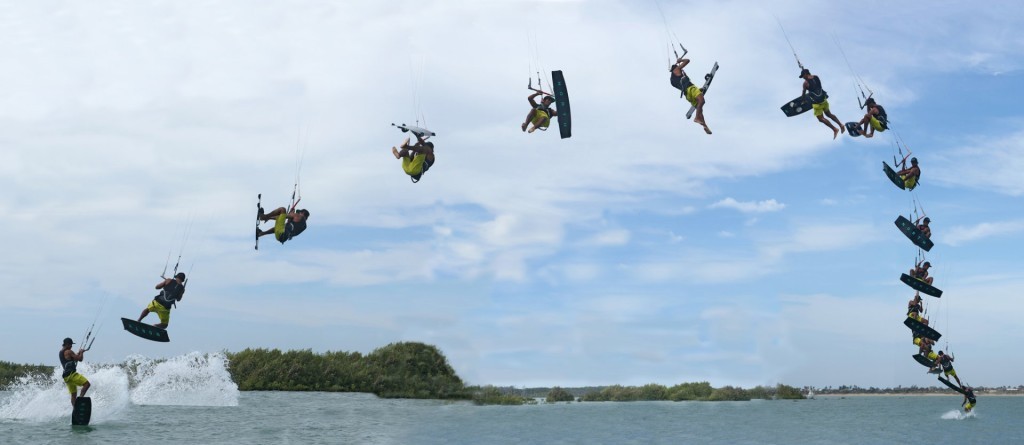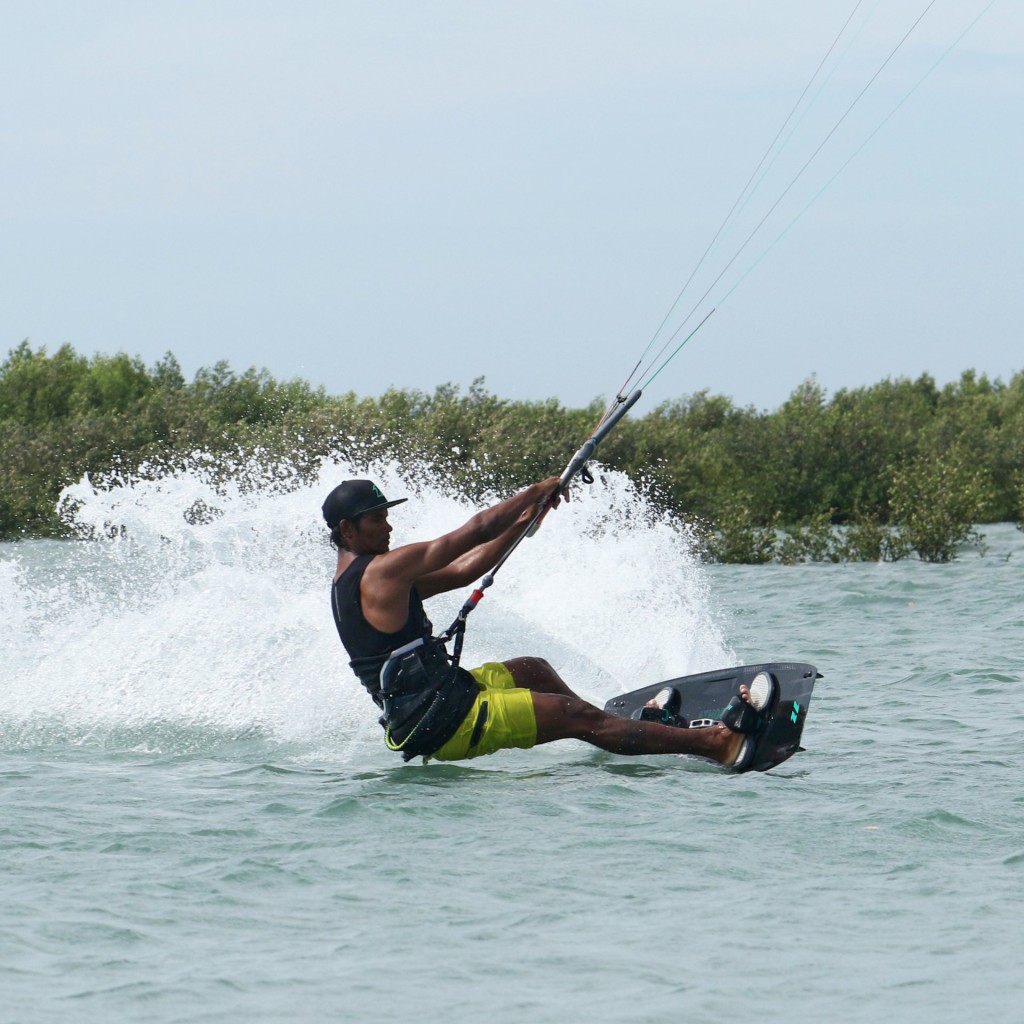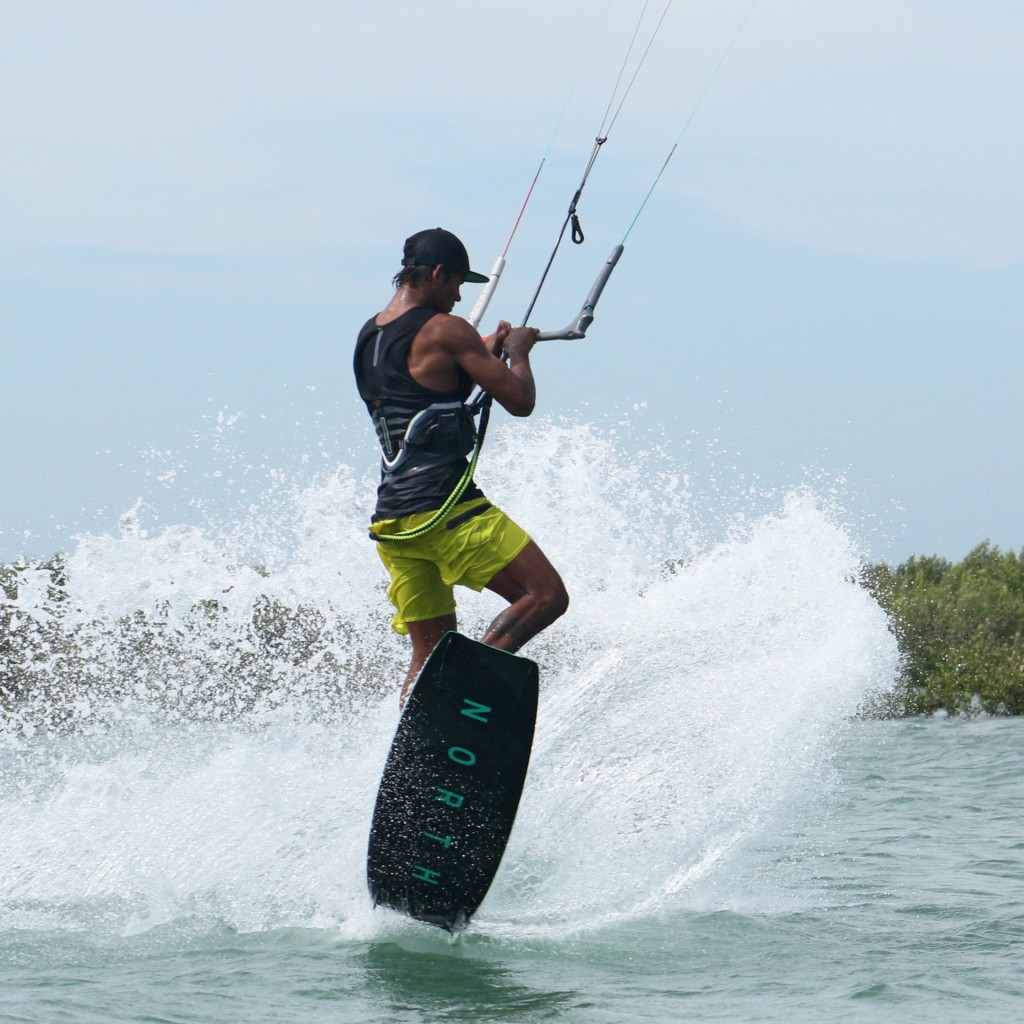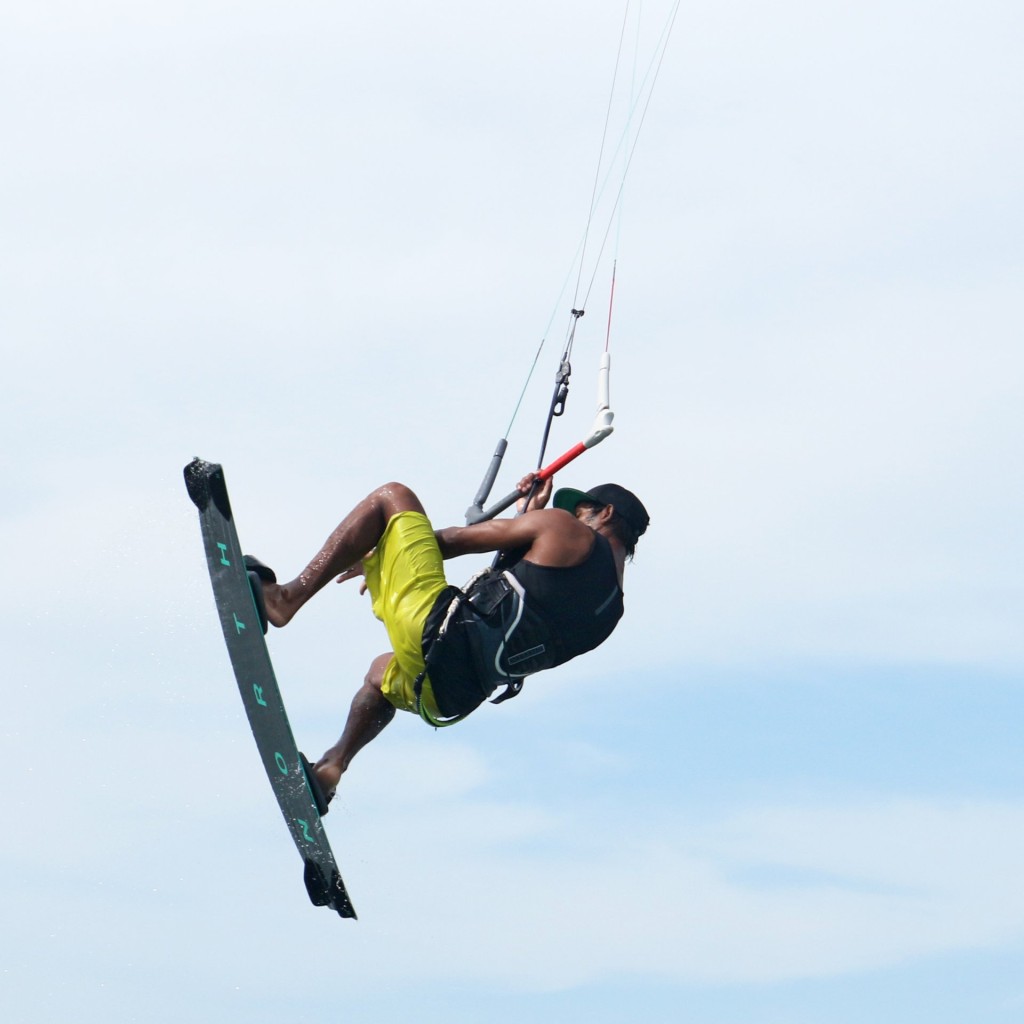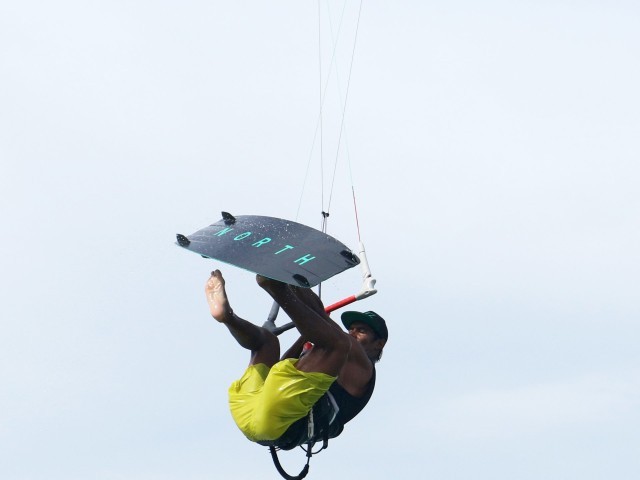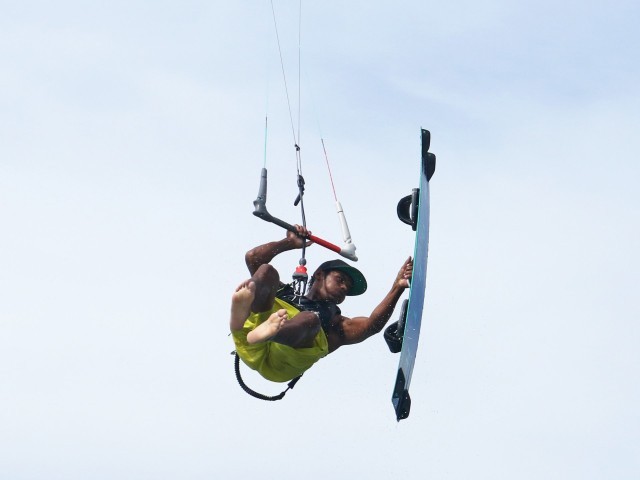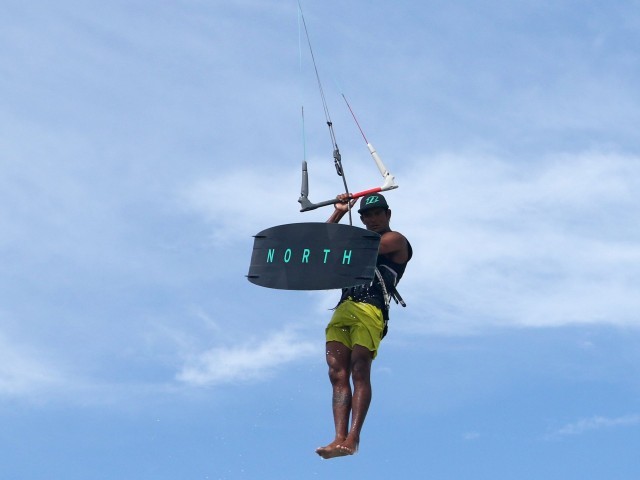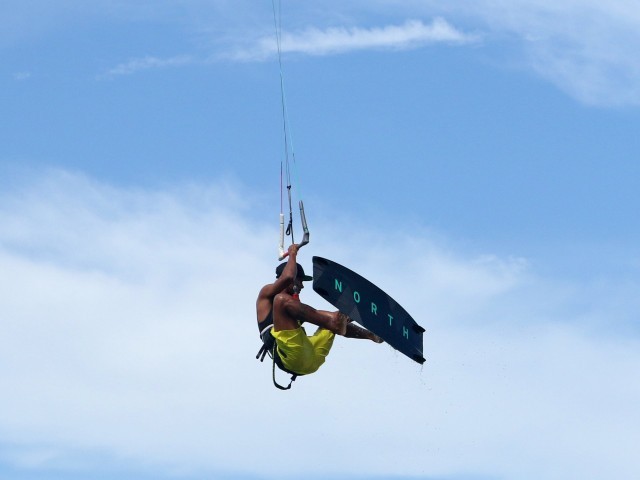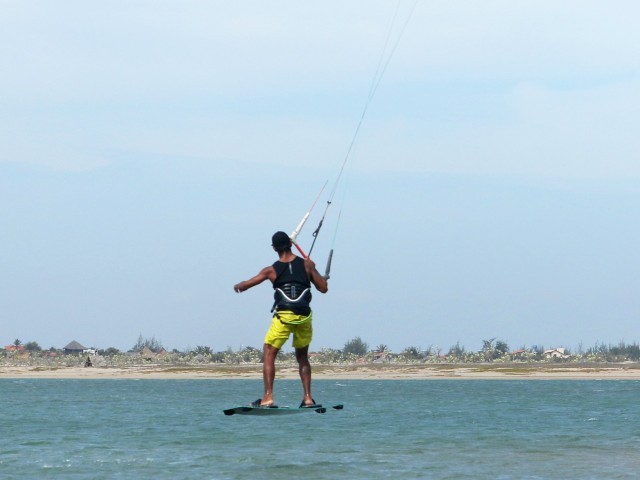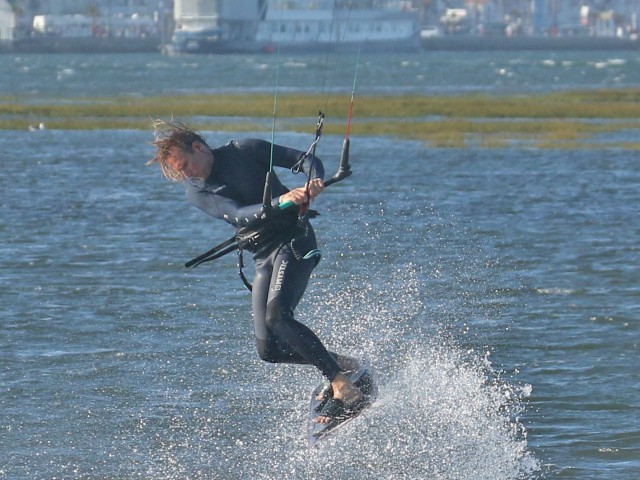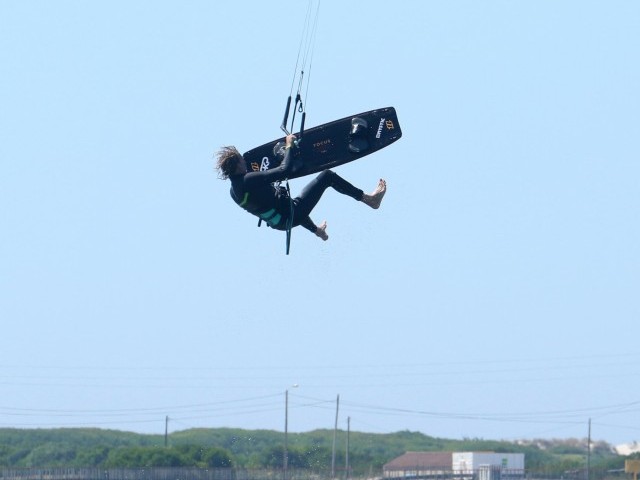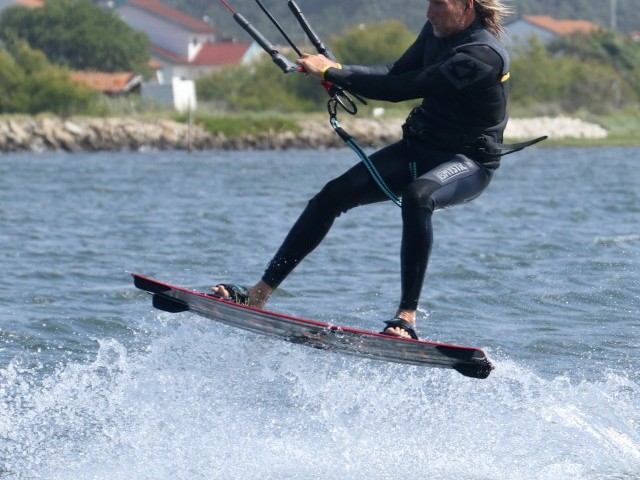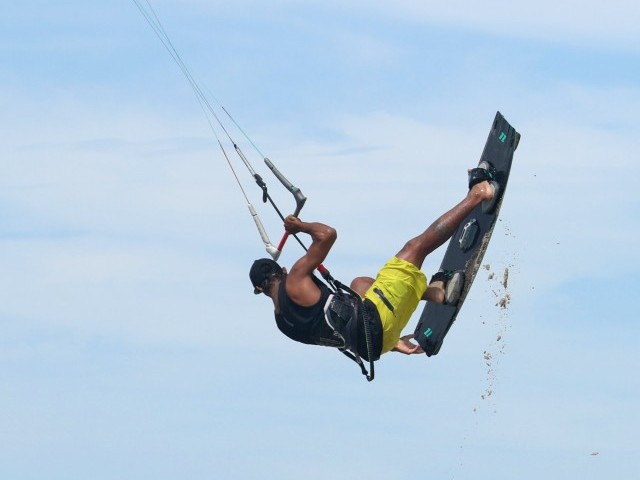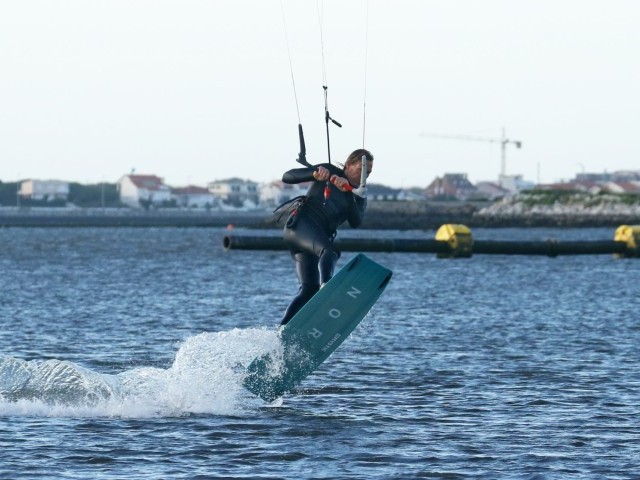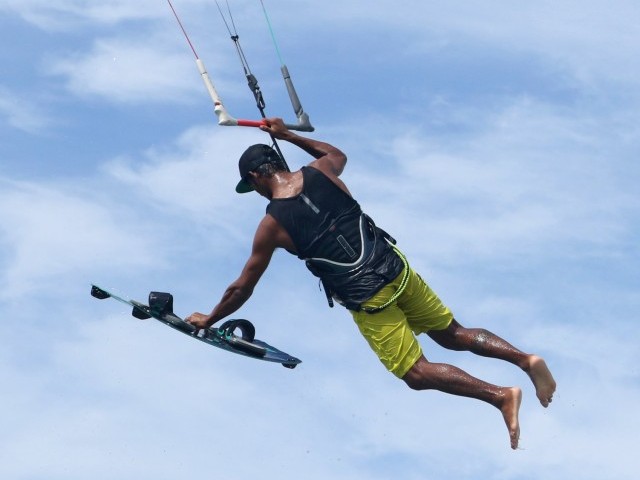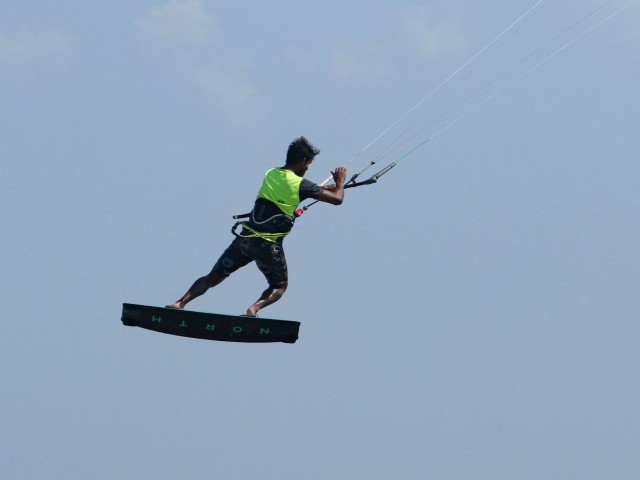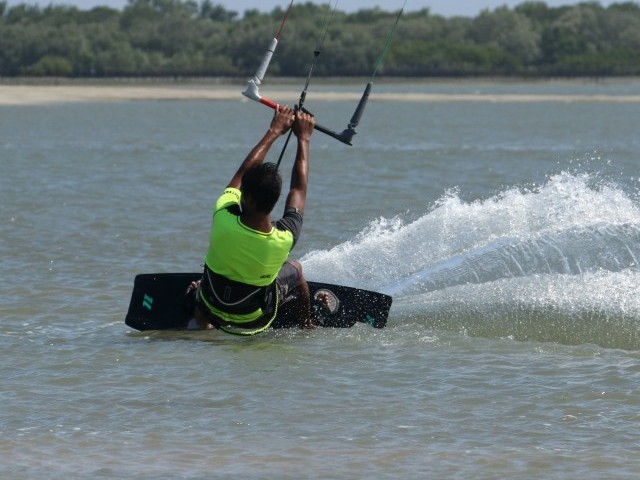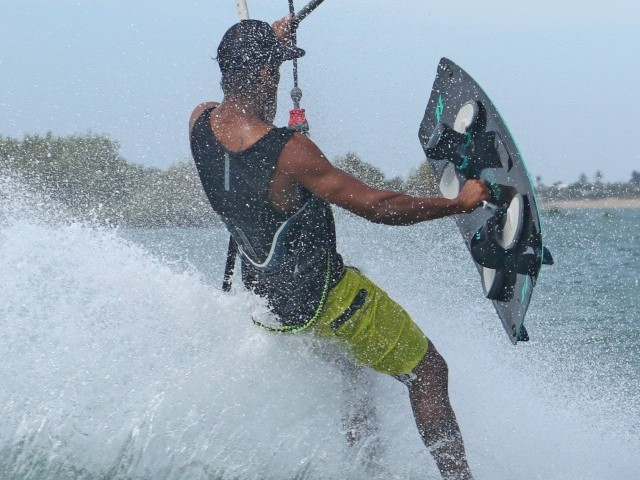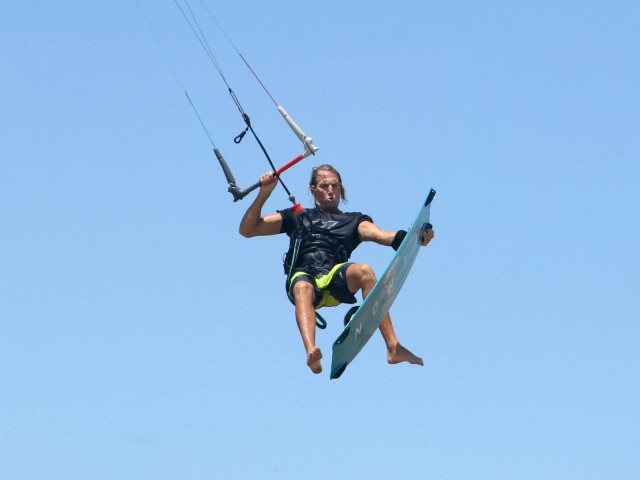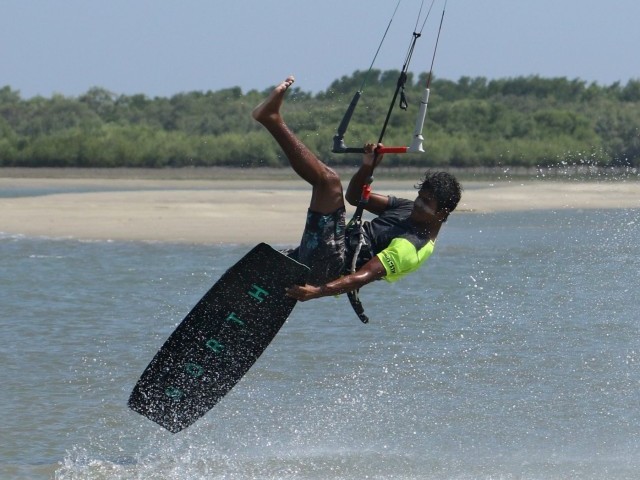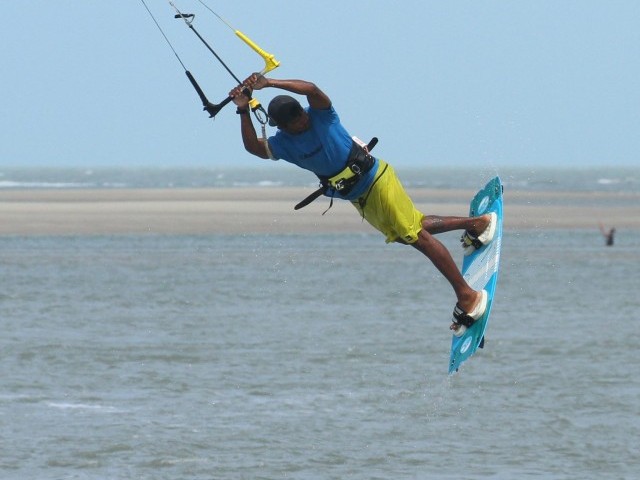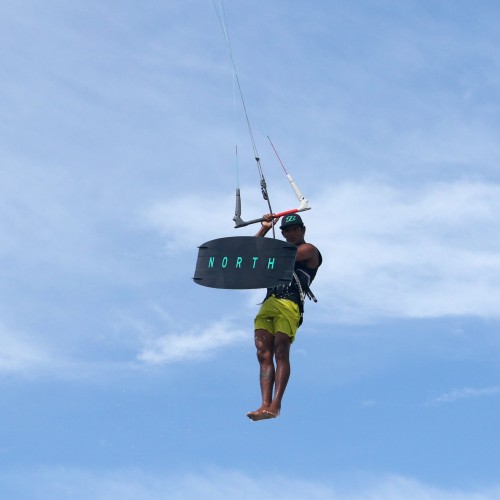
Double Front Board Off
Technique / Advanced
Introduction
Heliarde is back with some big air shenanigans for you all. This time with a lofty double front roll with a rather casual board off. Nothing beats a biggy, except a biggy with some form of embellishment, and a board off double certainly does add more than a hint of spice. May we suggest that a decent double front is already in the bag, preferably with a slowish rotation. The rest we can add on nicely. Let’s leap straight into juicy bits.
The Approach Pic A.
Unless you are an absolute ninja and can move all your limbs at breakneck speed, you’re going to prefer time and therefore height to fit all this in. This will allow you to rotate slowly, lift the board off, know where you are, replace the board and have time to think about landing. In which case you’ll need some power in the kite so you can get a decent boost. It’ll be simpler on a bigger kite as you’ll get more hangtime for less effort as the kite will hold you and float you down more. Anything from 9m upwards is good, although a sporty 12 is ideal. Approach wise you should have your hands centred on the bar, sweet spot trimmed comfortably out, decent speed and a solid edge. Your kite parked around 11 or 1 o’clock with a decent rooster chasing you. Here Heliarde is powered, his bar is within reach but trimmed out, he’s edging hard with plenty of board in the water and he’s sent the kite with meaning. All of which bodes well for some decent air.
Lift Off Pic B.
Just as with any front roll, your initial stamp on take-off will set your rotation in motion. How much you give will depend on how much power you have and therefore how much height and time you’ll enjoy. Ideally, as stated above, your rotation should be slow and controlled, and therefore you don’t want to throw yourself into a disorientating spin. That said, your stamp should still be hard, making sure you get maximum bang for your buck on resistance at take-off. Kicking yourself upwind, hard against your edge will put maximum tension on the lines and results in most height and least downwind drift. If you have a look at Heliarde you can see that he’s given an almighty stamp, lots of spray, his back leg is fully extended, along with the rest of his body, all aimed at height. However, his head is up and still looking forwards. He hasn’t thrown himself into a fast front rotation, the only key that’s it’s a front roll is the bent front leg. And finally seeing as how he gave the kite a good send back for take-off as well as pulling the bar in, he’s also levelled it, to stop the kite going any further back than it already has.
Dynamic Patience Pic C.
As soon as you’re off the water you have one aim, to get the board off. However, there is no rush. The very motion of a front roll will eventually bring the board up high and rock you back into the perfect position from which to remove the board, so you might as well wait for the help. Added to this by going for maximum boost you will be fully extended as in the previous photo. Therefore, to help things along get yourself ready, bring your knees up and get the kite stable and positioned behind 12 o’clock so that your balanced and confident. Once you’re happy you can free your back hand and reach towards the board. Heliarde has his knees high as he starts to rotate, he’s got the kite parked behind him and he’s reaching towards the board.
Board Off Pic D.
This is where the slow rotation really comes in handy. It means that with no rush you can wait until you’re already 180°. Here the shoulders have rolled back, and the board will naturally be higher. With a bit of effort, you can exaggerate the status quo and lift the board a tad higher. Grabbing either the toe side edge off the board or the handle you can then hold the board firm and up, whilst slipping your feet out of the straps. You can clearly see how Heliarde is holding the board high, allowing his feet to benefit from gravity and drop out. His bar is in on the sweet spot and he’s watching the board, no rush. No surprise there:)
More Rotation Pic E.
Once the board is off and you’re comfortable with kite, it’s back to the double and making sure you get enough rotation, whilst keeping everything in place for later on. Here Heliarde is coming around to complete his first rotation. In an effort to keep things moving now is when he throws his head and looks over his rear shoulder. To add some extra impetus, you can twist your hips and push your knees around. With support from the kite, Heliarde also leads with the board and holds it high. This way it won’t get left behind or slow him down.
Enjoy Pic F.
Once you’re en route and going around number two it’s a matter of enjoying the moment for as long as possible. At halfway around number 2 you have options. You can either already think about getting the board back on if you’re low on height or rotating quickly. Or if all feels rather wonderful you can bask in your resplendent glory and give 100% to the admiring masses. Heliarde has opted for the later, tweaking out his legs and holding the board aloft for all to see. Whilst making the most of this moment, you will be on your way back down, so it’s a good time to redirect the kite forwards. This will give you a bit more lift as the kite goes over 12, which translates to extra time to get the board back on, and it will also help pull you around the last bit of rotation. You can see Heliarde has given the bar some input, steering it forwards with his front hand.
Board On Pic G.
As the kite moves forwards, pulls and lifts it’s the last chance to get the board back on. As long as you’ve held it high the board will be in place. Get the abs fired up and lift your knees and feet, whilst concentrating on the straps so that you can lower the board back onto your toes. As your feet approach the straps it can help to ease the bar out a touch, momentarily releasing pressure and making it easier to reconnect feet and straps. Heliarde has his board high, bar feathered out and feet homing in on the straps. It’s also worth noting here that although this is a double front with board off, the board is only off at most for a little more than one rotation.
Landing Pic H.
All good things must unfortunately come to an end, and what better way to end it than stomping the landing. This should be bread and butter stuff. However, knowing that you went for height, chances are that you’ll be coming in at a fair lick, and having added a double front you will have some downwind drift too, so everything needs to be exaggerated. This means that you’ll have to give the kite an almighty dive down through the window, to pull you downwind and soften the landing. You can see Heliarde has been pretty aggressive with his dive, which results in the kite pulling him off the wind for a relatively gentle touch down. Bingo.
Top Tips
Step by step, bit by bit. Start off with a few double fronts to get into the swing of things before adding the board or handle grab and then finally the board off. Concentrate on stamping against your edge rather than throwing yourself across the board on take-off, as this will give you more height, time and control. And finally, if you feel that you’re not going to get the board back on, make sure that you leave it behind you, don’t drop it last minute in front of you where you might land on it.
Have a look at the sequence and videos to see it up live and personal.
Common Problems
Not getting the board off. Don’t rush, wait for the natural moment halfway around number one. It helps to loosen the straps, and this will also make it so much easier to get the board on.
Stalling the front roll and not completing the full two. It’s easy to concentrate too much in the board off and forget about the double. Make sure that you really throw the head into the second rotation. Also make sure that you redirect the kite to help you around the last part of number 2.
Can’t get the board on. This is usually a matter of time. That extra time can be squeezed by committing to the dive of the kite. This may not always seem like the most sensible thing, but it’ll help.
Keystones
- Good power, speed & solid send
- Hefty stamp upwind, no head
- Knees up, kite parked back, wait for natural moment
- Throw head for no. 2
- Redirect and board on
This technique article was in Issue 82 of IKSURFMAG.
Related
By Christian and Karine
Christian and Karine have been working together as a coaching team, running improver to advanced kitesurfing clinics since 2003.






